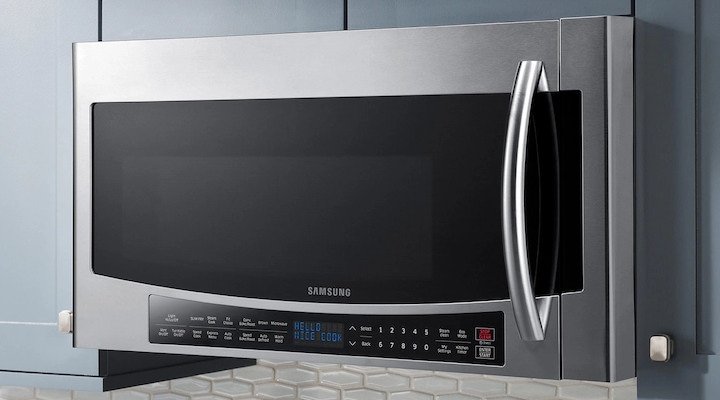
When your Samsung microwave displays the error code LE, it indicates a problem with the microwave’s internal sensors. These sensors are like the eyes and ears of your microwave, constantly monitoring its operations to ensure everything’s running smoothly. Just like how a car’s dashboard might alert you about a low tire pressure or an oil change, the LE code is a heads-up that something’s amiss with your microwave’s sensor system.
But before you start dreading the worst, take a deep breath. Many times, these errors can be easily fixed without calling in a professional. Let’s dive deeper and explore what this error code means, why it happens, and how you can deal with it.
Understanding the LE Error Code
The LE error code typically points to an issue with the low voltage sensor or the circuitry associated with it. You might be wondering, “Why would low voltage be a problem for my microwave?” Well, imagine trying to write with a pencil that’s too dull—the pencil is there, but it just won’t work right. Similarly, if the voltage is too low, the microwave struggles to function properly, and the sensor picks up on this glitch.
Low voltage can occur due to various reasons. It might be because of a weak power supply in your home or an overloaded electrical circuit. Think of it like a busy highway during rush hour, with too many cars trying to squeeze through. Your microwave needs a clear and steady flow of electricity to work efficiently.
Additionally, the LE error could result from problems with the internal circuitry. Imagine a series of tiny wires and circuits inside your microwave, all working together harmoniously. If one part of the system becomes faulty, it could lead to disruptions in how your microwave operates, triggering the error code as a red flag.
Common Causes of the LE Error
Now, you might be curious about what actually causes these low voltage or circuit issues. One of the most common culprits is a power surge. Power surges are like unexpected waves crashing over a calm beach, bringing instability. They can temporarily raise or lower the voltage supply your appliances receive, leading to errors.
Another frequent cause is using your microwave on a circuit shared with other high-powered devices. Think of it like trying to use a hairdryer and a toaster simultaneously on the same circuit—there’s only so much power to go around, and it might not be enough, causing the microwave to falter.
Sometimes, damage or wear and tear on the microwave’s power supply cords can also lead to this issue. Over time, cords can fray or become damaged, much like a garden hose that springs a leak. When this happens, the electrical current doesn’t flow as it should, causing operational errors.
How to Fix the LE Error
Here’s the deal: fixing the LE error code might be simpler than you think. Start by checking your home’s power supply. Is the microwave the only appliance running on its circuit? If not, consider plugging it into a dedicated outlet. This change can ensure it gets the consistent power it needs, much like serving water from a direct line instead of a tank.
Next, take a look at the power cord and plug of the microwave. Are there visible signs of wear or damage? If yes, it might be time to replace them. Just like a person can’t function properly with a sprained ankle, a microwave won’t work well with a damaged power setup.
Finally, if the issue persists despite these checks, it might be time to consult a professional. Sometimes, the internal circuitry needs expert handling, akin to needing a skilled technician to tune a complex musical instrument. A professional can assess the internal wiring and components more thoroughly.
Preventative Measures and Final Thoughts
Now that you understand what the LE error means and how to tackle it, let’s talk about prevention. Keeping your microwave in tip-top shape can help avoid such errors in the future. Ensure it’s plugged into an appropriate outlet and avoid overloading circuits with too many appliances.
Consider using a surge protector. It acts like a safety helmet, protecting your microwave from unexpected voltage fluctuations. Regularly inspect power cords and replace them at the first sign of damage to keep the electrical flow uninterrupted.
In conclusion, the LE error code is more of a gentle reminder than a cause for panic. It signals that your microwave needs a little care to continue serving your household reliably. With some simple checks and possible adjustments, you can resolve the issue and keep your microwave running smoothly for years to come. So, next time you see that code, you’ll know exactly what to do!